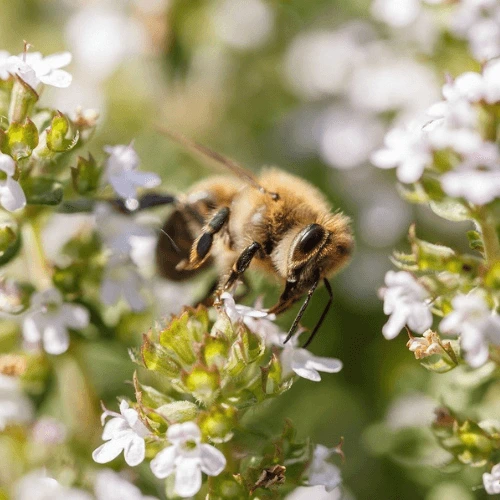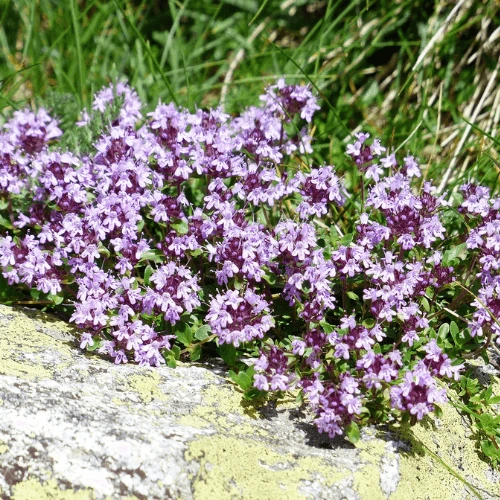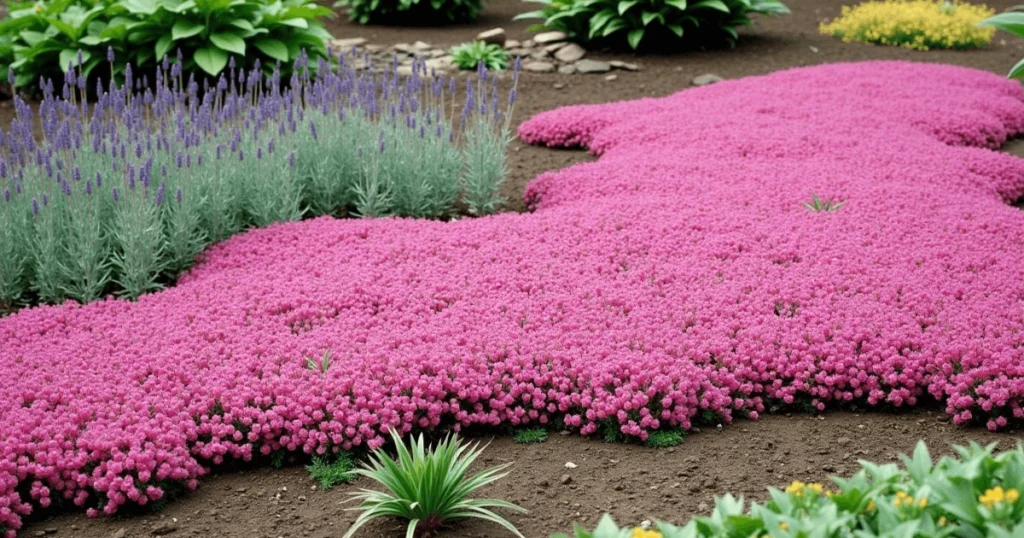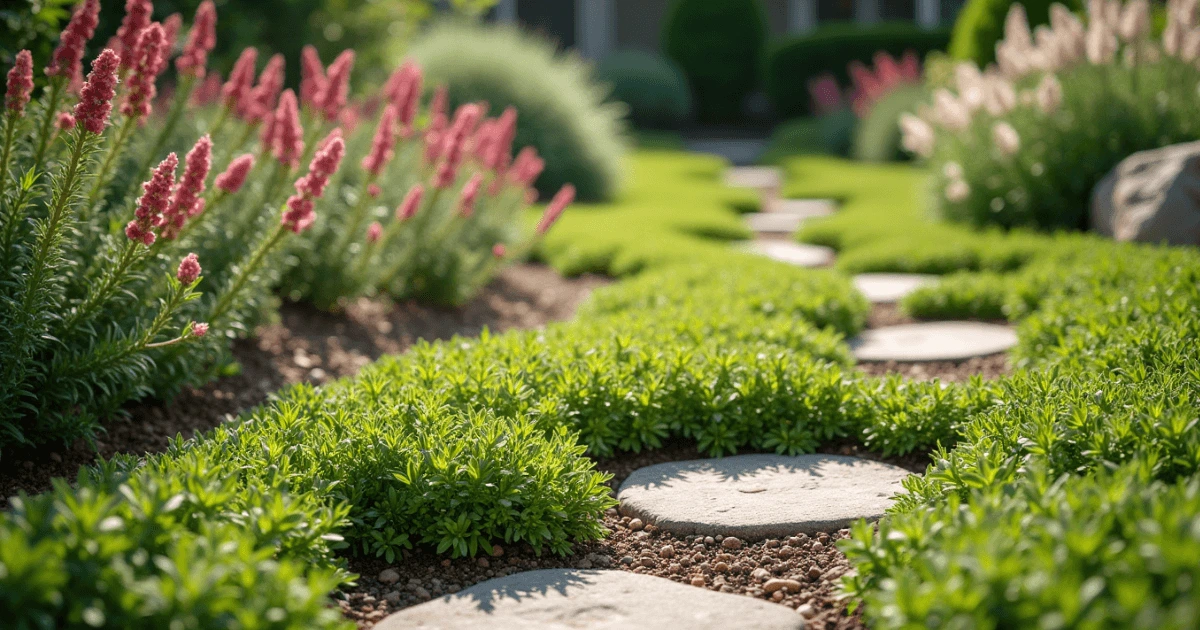Looking for a versatile plant that’s as beautiful as it is functional? Meet creeping red thyme—a gardener’s dream. This vibrant, aromatic ground cover doesn’t just add a splash of color to your garden; it also serves as a natural pest repellent, attracts pollinators, and even doubles as a culinary herb. Whether you’re a seasoned gardener or a beginner, creeping red thyme is easy to grow and offers endless possibilities for landscaping and beyond. Dive into this guide to discover everything you need to know about cultivating, using, and caring for creeping red thyme in your garden!
In This Article
| Common Name | Creeping Red Thyme |
| Botanical Name | Thymus serpyllum |
| Family | Lamiaceae |
| Plant Type | Herbaceous Perennial |
| Mature Size | 2–4 inches tall, 12–18 inches spread |
| Bloom Time | Late Spring to Summer |
| Toxicity | Non-toxic to humans and pets |
| Sun Exposure | Full Sun |
| Soil Type | Well-draining, sandy |
| Soil pH | Slightly alkaline (6.0–8.0) |
| Flower Color | Red-Pink |
| Hardiness Zones | USDA Zones 4–9 |
| Native Area | Europe, North Africa, Asia |



Top 7 Benefits of Growing Creeping Red Thyme
This beauty is a gardener’s favorite for good reasons. This hardy ground cover plant doesn’t just enhance your garden’s beauty—it also offers a range of practical benefits that make it a valuable addition to any landscape. Here are the top seven benefits of growing creeping red thyme:
1. Low-Maintenance Ground Cover
- Creeping red thyme is incredibly easy to care for, making it perfect for busy gardeners.
- It spreads quickly, covering bare soil and suppressing weeds.
- Once established, it requires minimal watering and thrives even in poor soil.
- Bonus: It’s drought-tolerant, saving you water and effort during dry seasons.
2. Attracts Pollinators
- This plant is a magnet for beneficial insects like butterflies or bees.
- Its vibrant red-pink flowers provide nectar and pollen, supporting pollinator populations.
- By growing creeping red thyme, you contribute to a healthier ecosystem right in your backyard.
3. Perfect for Walkways and Rock Gardens
- Creeping red thyme adds a splash of color and texture to pathways, patios, and rock gardens.
- When stepped on, it releases a delightful, aromatic fragrance.
- Its low-growing nature makes it ideal for filling gaps between stepping stones or rocks.
4. Natural Pest Repellent
- Thyme contains essential oils, such as thymol, which naturally deter garden pests.
- You’ll notice fewer aphids, whiteflies, and other unwanted insects near your plants.
- This makes it a companion plant for vegetables and flowers.
5. Medicinal and Culinary Uses
- The leaves of your plant are rich in thymol, known for its antibacterial and antifungal properties.
- Use it to brew soothing herbal teas or to infuse oils for home remedies.
- In the kitchen, it serves as a flavorful herb to season soups, roasts, and salads.
6. Great for Erosion Control
- Creeping red thyme’s dense mat-like growth helps stabilize soil, especially on slopes or hills.
- Its deep root system prevents erosion by anchoring the soil firmly in place.
7. Year-Round Appeal
- In mild climates, creeping red thyme remains evergreen, providing color all year long.
- Even in colder areas, its leaves often turn a bronze-red hue in winter, adding seasonal interest.
By growing creeping red thyme, you’ll not only enjoy a beautiful and functional ground cover but also contribute to a healthier garden ecosystem. This plant combines practical advantages with aesthetic charm, making it an excellent choice for gardeners of all levels. Why not give it a try in your next gardening project?
How to Grow Creeping Thyme in Your Garden
Creeping red thyme is a resilient and versatile plant that thrives with minimal care. Whether you’re a beginner or an experienced gardener, it’s easy to grow this ground cover by following these simple steps:
Best Growing Conditions
- Sunlight:
- Prefers full sun to partial shade.
- Needs at least 6 hours of sunlight daily for optimal growth.
- Soil:
- Grows best in well-draining soil with a pH between 6.0 and 8.0.
- Tolerates poor soil but thrives in slightly alkaline conditions.
- Hardiness Zones:
- Ideal for USDA zones 4–9, making it suitable for most parts of the USA.
Step-by-Step Planting Guide
- Prepare the Soil:
- Clear weeds and loosen the top layer for better aeration.
- Add sand or grit to improve drainage, if necessary.
- Planting:
- Space plants 6–12 inches apart to allow spreading.
- Cover roots lightly with soil and press gently.
- Watering:
- Water sparingly after planting to avoid waterlogging.
- Once established, water only during extended dry spells.
Caring for Creeping Red Thyme
- Pruning:
- Trim back after flowering to maintain its shape and encourage growth.
- Fertilizing:
- Use organic compost once a year to boost nutrients.
By providing the right conditions and minimal maintenance, creeping red thyme will flourish, creating a lush, aromatic ground cover in your garden.

Creative Uses for Creeping Red Thyme in Landscaping
Creeping red thyme isn’t just practical; it’s also a fantastic design element for landscaping projects. Here are some creative options to use it:
1. Lawn Alternative
- Replace traditional grass with creeping red thyme for a low-maintenance, eco-friendly option.
- Requires no mowing, minimal watering, and adds a delightful fragrance.
2. Filling Gaps in Pathways
- Use it between stepping stones for a vibrant and aromatic ground cover.
- Its ability to withstand foot traffic makes it perfect for walkways.
3. Rock Gardens and Slopes
- Add color and texture to rock gardens with its cascading growth habit.
- Stabilizes soil on slopes, preventing erosion.
4. Edging for Flower Beds
- Create a neat, colorful border around flower beds or garden paths.
- Complements flowers and shrubs with its vibrant green foliage and red blooms.
5. Vertical Gardens and Wall Planters
- Use it in vertical setups to achieve a lush, cascading effect.
- Ideal for small spaces or decorative accents.
Creeping red thyme combines beauty and utility, making it a versatile plant for creative garden designs.
Common Problems and Solutions for Creeping Red Thyme
Although this plant is a hardy and low-maintenance plant, it can face a few challenges. Here’s how to identify and resolve common problems:
1. Pests
- Problem: Aphids and spider mites occasionally attack your plant.
- Solution: Spray affected areas with neem oil or a mix of water and dish soap to repel pests naturally.
2. Overwatering Issues
- Problem: Yellowing leaves or root rot from excessive watering or poorly draining soil.
- Solution: Ensure soil is well-draining and water only when the top inch of soil feels dry.
3. Poor Growth in Shaded Areas
- Problem: Creeping red thyme struggles to thrive without sufficient sunlight.
- Solution: Relocate plants to a sunnier spot with at least 6 hours of sunlight daily.
4. Winter Damage
- Problem: In colder regions, frost can damage the plant.
- Solution: Apply a thin layer of mulch for insulation and prune dead growth in early spring.
By addressing these common issues promptly, your plant will stay healthy and continue to thrive.
FAQs
1. Is creeping red thyme pet-safe?
- Yes, it’s generally safe, but ingesting large amounts may upset some pets’ stomachs.
2. Can creeping red thyme survive winter?
- Yes, in USDA zones 4–9, though colder areas may require mulch protection.
3. How fast does creeping red thyme spread?
- It can spread 12–18 inches within a single growing season.
4. How do I propagate creeping red thyme?
- Use cuttings or divide mature plants for propagation.
These FAQs address common queries, ensuring you’re fully prepared to care for your plant.
Conclusion
Creeping red thyme is the perfect addition to any garden, combining beauty, practicality, and ease of care. Whether you use it as a fragrant ground cover, an erosion control solution, or an aromatic herb, it’s a plant that offers endless rewards. Ready to transform your garden with creeping red thyme? Start growing it today!
Don’t miss more expert gardening tips and tricks—subscribe to our newsletter for the latest updates, inspiration, and exclusive advice tailored to your gardening journey.

